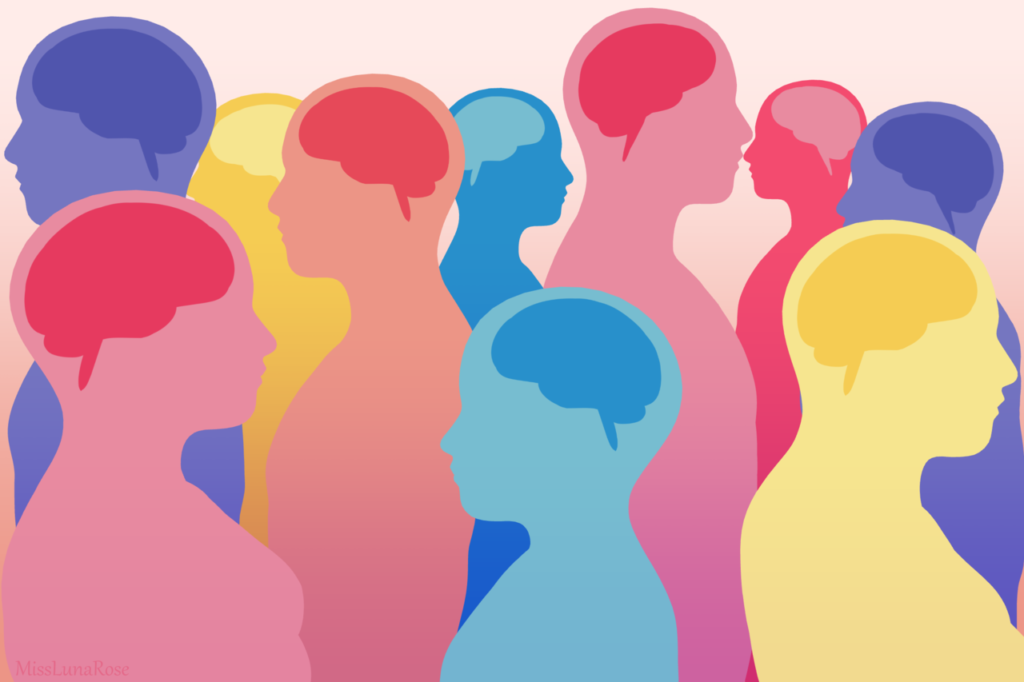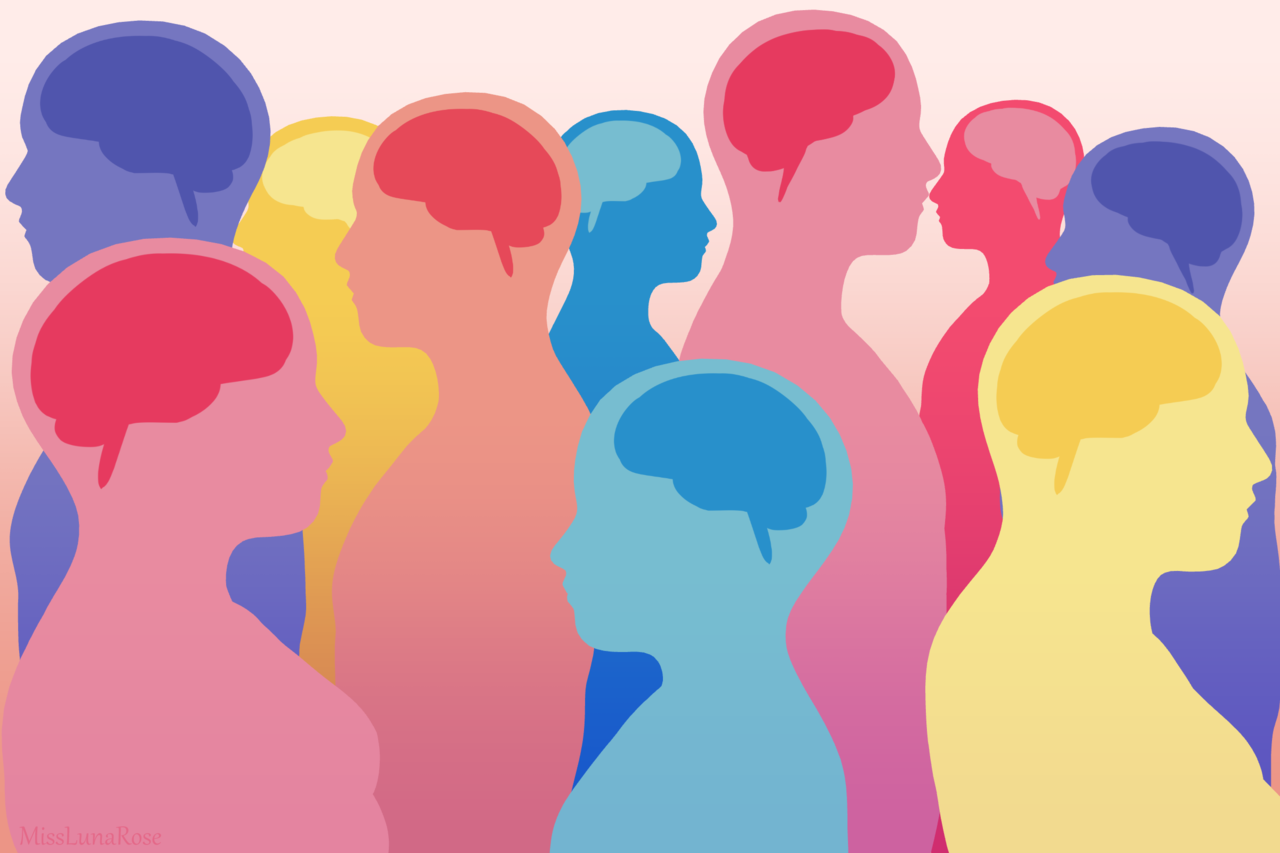Truths and myths following National Eating Disorder Awareness Week

This past week marked National Eating Disorder Awareness Week. Amidst the sharing of informative social media posts, online discussions educating individuals on the topic and fascinating testimonies from those with an eating disorder (ED) or in recovery, there were also some less positive discussions taking place.
It’s not uncommon for individuals to misunderstand eating disorders, in ways that serve to hurt and misinform others. People have a tendency to simultaneously vilify, praise and delegitimize the experiences of those with eating disorders. These mixed messages make recovery seem unattainable while making the continuation of disordered eating feel unbearable.
Individuals with eating disorders are often trapped by the myths others hold towards them and their conditions. Let’s address some of those myths.
Myth #1: Eating disorders affect a relatively small percentage of people
In reality, the Academy for Eating Disorders found that nine percent of the U.S. population, or roughly 28.8 million Americans, has or will have an eating disorder in their lifetime. That’s slightly less than one in ten people in the U.S., and that percentage is the same worldwide.
It’s understandable that people have this misconception—it’s a lot more painful to admit that almost every class you go to, store you enter, or—at least when you’re looking at college-aged individuals—just about every friend group has at least one person in it who has or has had an eating disorder. The pervasiveness of eating disorders can be hard to fathom, but by no means do they only affect a small number of people.
Myth #2: All eating disorders lead to weight loss
We often romanticize eating disorders in the U.S., even if we don’t actively try to. When we praise a certain body type—one that’s only attainable through disordered eating and photoshop—we put this behavior on a pedestal and often make it harder to recognize the many different kinds of eating disorders.
As a quick review, there are six main types of EDs: anorexia nervosa, bulimia nervosa, binge-eating disorder, pica, rumination and avoidant. Most people are really only familiar with the first two types: anorexia and bulimia. While the former involves restricted calories and the latter involves purging, these two types of eating disorders will often lead to some weight loss.
However, despite these two being the ones most often seen on television shows and in movies, often by actors and actresses who are average or underweight, EDs are most definitely not a solution to losing weight. In fact, most eating disorders often lead to weight gain in recovery, or, as is the case with binge-eating disorders, weight gain is actually far more common than weight loss.
My point here is not to say that individuals who either gain or lose weight due to eating disorders are anyway at fault, but instead to show that when EDs are seen as a sure-fire way to lose weight, that gives people the impression that there are positive aspects of eating disorders. This type of thinking is what often leads many with eating disorders to feel invalidated socially when they have to work towards recovery.
Myth #3: Individuals with restrictive eating disorders are all underweight
The Archive of General Psychiatry found that less than six percent of all individuals with eating disorders are underweight.
Thinking that only those who are severely underweight can have EDs is incredibly dangerous. It makes it harder to recognize when someone has an eating disorder, as people who display disordered eating may not be able to observe anything problematic in their behavior because they only look to the scale to tell them if they have a problem.
Additionally, family and friends may unknowingly praise an individual for a dramatic weight loss as long as the individual is still of average or above-average weight, not realizing they’re discouraging the individual from seeking help for their behavior.
Myth #4: Only women are affected by eating disorders
While it is true, in the U.S. that women are about four times more likely to develop an eating disorder than are men, the National Eating Disorder Association still found that a significant number of men develop EDs.
In the U.S., for example, if roughly seven-to-eight percent of women will have an eating disorder, roughly one-to-two percent of men will as well.
Myth #5: Eating disorder is often the consequence of an individual’s life choices
This myth is shrouded in stigma. Eating disorders, and especially those that lead to mild or significant weight gain, are often used as a weapon to blame the individuals who have them.
The advice often given to those with EDs really exemplifies this stigma and misunderstanding. Those with restrictive eating habits are told to “Just eat more,” “Take a break from exercise” or they’re simply advised to just stop restricting. On the other hand, individuals who are overweight are told to go on diets, see a nutritionist or “Just move around a bit more.”
These types of advice neglect to acknowledge that EDs are mental illnesses, not preferences that can be changed or patterns that could be influenced by a nutritionist in place of a trained medical health professional. The Archive of General Psychiatry found that between 28 and 74 percent of the risk from eating disorders (contingent on the disorder) is dependent on genetic heritability.
Even when genetics aren’t a factor, blaming someone for their mental illness is neither helpful nor fair.
Myth #6: Eating disorders aren’t dangerous
Often seen as a fad, or one of the lesser mental health conditions, eating disorders are actually the second most dangerous mental illness to humans, directly behind opioid overdose. In the U.S., 10,200 people die each year as a result of eating disorders, that’s the equivalent of one person every 52 minutes.
Of those with eating disorders, 26 percent will attempt suicide. EDs are incredibly hard on an individual, both mentally and physically; they can lead to malnutrition, organ failure, thyroid problems, a weakened immune system and so much more. Even the individuals who are in recovery often suffer from chronic health issues as a result of their eating disorders.
Myth #7: Access to treatment is the same for all people
Something ED awareness often seems to miss is how centered activism has been on the experience of white, often middle-class, women. The National Association of Anorexia Nervosa and Associated Disorders (ANAD) has found that BIPOC individuals are significantly less likely to be asked about eating disorders by health care providers, even when presenting the same symptoms.
Additionally, those BIPOC individuals are half as likely to be diagnosed, and of those who are diagnosed, they’re much less likely to receive treatment. Black people are far less likely to be diagnosed with anorexia, even when they have had the condition for longer periods of time.
The point is that talking about EDs is great, and spreading knowledge is essential, but doing so without recognizing the ways that eating disorders disproportionately affect certain groups is not providing the full picture.
Myth #8: Someone who has had an eating disorder in the past can be ‘cured’
Unlike many physical illnesses, there is no one medication or treatment plan that can forever rid someone of their eating disorder. It’s tempting with an illness as pervasive and dangerous as EDs, to try to say that we can find an easy solution to ‘fix’ the problem and be done with it.
In reality, disordered eating isn’t something that can be done away with. Recognizing that the problem isn’t easy to solve can seem disheartening, but really, it’s a testimony to all of those individuals in recovery who work hard every day to develop a healthy relationship with food.
It’s also essential to talk about the ongoing process of recovery because people will slip up. I developed an eating disorder when I was 13 years old. In the past nine years, I have gone from having restricted meals every time I ate, to once a week, to once a month, to the present, when I haven’t restricted myself in over two years.
However, that doesn’t mean I won’t restrict myself tomorrow or the day after that. I don’t say this to sound bleak, but rather to show that it’s something that I still think about from time to time. That’s what recovery is—it’s going from thinking about food every minute of every day, to smiling to yourself because you can’t remember the last time you did.
Truth: Talking about eating disorders and sharing information does help
Perpetuating myths about eating disorders can be damaging. These myths encourage stigma, make it harder to help those with EDs and make the steps towards recovery an even more difficult process. The bright side to this is that by learning about eating disorders and stopping the spread of these myths, you directly counteract the damage.
